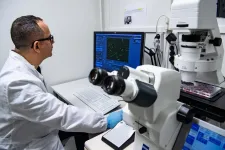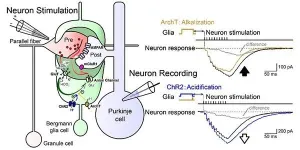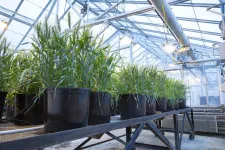(Press-News.org) According to a new study published in The American Journal of Human Genetics, more than one third of genetic variants that increase the risk of coronary artery disease regulate the expression of genes in the liver. These variants have an impact on the expression of genes regulating cholesterol metabolism, among other things. The findings provide valuable new insight into the genetics of coronary artery disease. The study was conducted in collaboration between the University of Eastern Finland, Kuopio University Hospital, the University of California Los Angeles, and the University of Arizona.
Coronary artery disease (CAD) and its most important complication myocardial infarction (MI) are among the leading causes of death in the Western world. Both genetic and environmental factors contribute to the disease and recent genome-wide association studies have identified approximately 200 risk loci for CAD. However, the vast majority of such variants are located in the non-coding regions of the genome and have no known biological function. Even though the functional characterization of such variants has been difficult in the past, thanks to new and advanced genomics techniques such as RNA-seq, ChIP-seq, STARR-seq and HiC, and computational analysis, understanding the variants' functions is now possible.
The involvement of the liver in the progression of coronary artery disease is not completely understood. In the new study, the researchers show that over one third of risk variants for CAD are located in regulatory elements specific to liver, and they act to regulate the expression of genes implicated in traditional risk factors, such as glucose and cholesterol related traits.
"Our results not only confirm the correlation of cholesterol levels and the risk of coronary artery disease but also pinpoint for the first time the causal single nucleotide polymorphisms and the potential target genes that mediate the risk," Academy Research Fellow, Associate Professor Minna Kaikkonen-Määttä from the University of Eastern Finland says.
Another important finding was the discovery that risk variant-containing regulatory elements often seem to regulate many genes, not just one.
"Overall, our findings expand the list of genes and regulatory mechanisms acting in the liver and governing the risk of CAD development. Deciphering gene regulatory networks is becoming increasingly important in understanding disease mechanisms and developing next generation drug therapies," Associate Professor Kaikkonen-Määttä says.
INFORMATION:
The study was largely funded by the European Research Council through an ERC Starting Grand awarded to Associate Professor Kaikkonen-Määttä. Other supportive funding to the research groups was provided by the National Institutes of Health, the Academy of Finland, Jane and Aatos Erkko Foundation, Sigrid Jusélius Foundation, the Finnish Foundation for Cardiovascular Research, the Finnish Diabetes Research Foundation, and Kuopio University Hospital project grants.
For further information, please contact:
Academy Research Fellow,
Associate Professor Minna Kaikkonen-Määttä,
University of Eastern Finland,
A.I. Virtanen Institute for Molecular Sciences,
minna.kaikkonen (a) uef.fi,
tel. +35840 355 2413,
https://uefconnect.uef.fi/en/person/minna.kaikkonen-maatta/
https://uefconnect.uef.fi/en/group/cardiovascular-genomics-kaikkonen-lab/
Research article:
Ilakya Selvarajan, Anu Toropainen, Kristina M. Garske, Maykel López Rodríguez, Arthur Ko, Zong Miao, Dorota Kaminska, Kadri Õunap, Tiit Örd, Aarthi Ravindran, Oscar H. Liu, Pierre R. Moreau, Ashik Jawahar Deen, Ville Männistö, Calvin Pan, Anna-Liisa Levonen, Aldons J. Lusis, Sami Heikkinen, Casey E. Romanoski, Jussi Pihlajamäki, Päivi Pajukanta, and Minna U. Kaikkonen. Integrative analysis of liver-specific non-coding regulatory SNPs associated with the risk of coronary artery disease. The American Journal of Human Genetics, published online on February 23, 2021. DOI: 10.1016/j.ajhg.2021.02.006.
https://www.cell.com/ajhg/fulltext/S0002-9297(21)00048-3
Australian researchers have called for additional services for survivors of intimate partner violence - warning those who have these experiences are more vulnerable to elder abuse.
Women who survive domestic violence continue to experience negative effects well into their older years but they are also more vulnerable to elder abuse, says Flinders University researcher Dr Monica Cations, lead author of the study published in the American Journal of Geriatric Psychiatry.
"This is the first time this relationship has been demonstrated and tells us that older survivors need close monitoring and prevention efforts to keep them safe from further abuse."
The study looked at the psychological and physical impacts and risk for elder abuse associated ...
Before the corona pandemic, tens of millions international travellers annually headed to the tropics, getting exposed to local intestinal bacteria. A total of 20-70% of those returning from the tropics carry - for the most unknowingly - ESBL-producing bacteria resistant to multiple antibiotics. The likelihood of acquiring such superbacteria depends on destination and health behaviour abroad. The risk is greatest in South and Southeast Asia, and a substantial increase is associated with contracting travellers' diarrhoea and taking antibiotics while abroad.
An investigation led by professor ...
Tohoku University scientists have shown that neuronal and glial circuits form a loosely coupled super-network within the brain. Activation of the metabotropic glutamate receptors in neurons was shown to be largely influenced by the state of the glial cells. Therefore, artificial control of the glial state could potentially be used to enhance the memory function of the brain.
The findings were detailed in the Journal of Physiology.
Although the glial cells occupy more than half of the brain, they were thought to act as glue--merely filling the gap between neurons. However, recent findings show that the concentration of intracellular ions in glia, ...
A new theoretical study has proposed a novel mechanism for the creation of supermassive black holes from dark matter. The international team find that rather than the conventional formation scenarios involving 'normal' matter, supermassive black holes could instead form directly from dark matter in high density regions in the centres of galaxies. The result has key implications for cosmology in the early Universe, and is published in Monthly Notices of the Royal Astronomical Society.
Exactly how supermassive black holes initially formed is one of the biggest problems in the study of galaxy evolution ...
A German-Polish research team has succeeded in creating a micrometer-sized space-time crystal consisting of magnons at room temperature. With the help of the scanning transmission X-ray microscope Maxymus at Bessy II at Helmholtz Zentrum Berlin, they were able to film the recurring periodic magnetization structure in a crystal. Published in the Physical Review Letters, the research project was a collaboration between scientists from the Max Planck Institute for Intelligent Systems in Stuttgart, Germany, the Adam Mickiewicz University and the Polish Academy of Sciences in Pozna? in Poland.
Order in space and a periodicity in time
A crystal is a solid whose atoms or molecules are regularly arranged in a particular structure. If one looks at the arrangement with a microscope, one discovers ...
Today's quantum computers contain up to several dozen memory and processing units, the so-called qubits. Severin Daiss, Stefan Langenfeld, and colleagues from the Max Planck Institute of Quantum Optics in Garching have successfully interconnected two such qubits located in different labs to a distributed quantum computer by linking the qubits with a 60-meter-long optical fiber. Over such a distance they realized a quantum-logic gate - the basic building block of a quantum computer. It makes the system the worldwide first prototype of a distributed quantum computer.
The limitations of previous qubit architectures
Quantum ...
A new study, published today in Nature Digital Medicine, found that 'natural language processing' (NLP) of information routinely recorded by doctors - as part of patients' electronic health records - reveal vital trends that could help clinical teams forecast and plan for surges in patients.
The researchers from King's College London, King's College Hospital NHS Foundation Trust (KCH), and Guy's and St Thomas' Hospital NHS Foundation Trust (GSTT), used NLP algorithms to translate the electronic notes made by doctors into a standardised, structured set of medical terms that could be analysed by a computer.
Tracking trends in patients
In the ...
Social distancing - from mobility restrictions to complete lockdowns -- can take many weeks, possibly even months, a potentially devastating outcome for social and economic stability. One of the challenges is that the sick cannot be selectively isolated, since many of the spreaders remain pre-symptomatic for a period ranging from several days to as much as two weeks - invisible spreaders who continue to be socially active. Hence, it seems that without a population-wide lockdown isolating the carriers cannot be achieved effectively.
To bypass this challenge, researchers from Israel's Bar-Ilan University, led by Prof. Baruch Barzel, devised a strategy based on alternating lockdowns: first splitting the population into two groups, then ...
LOGAN, UTAH -- One solution to agriculture's many challenges -- climate change-induced drought, less arable land, and decreased water quality, to name a few -- is to develop smarter fertilizers. Such fertilizers would aim not only to nourish the plant but also to maximize soil bacteria's positive effects on the plant. Tapping into a plant's microbiome may be the extra layer of defense crops need to thrive.
In their study published on Dec. 4 in Nature: Scientific Reports, researchers at Utah State University analyzed the effects of two abiotic stressors on Pseudomonas chlororaphis O6 (PcO6), a health-promoting bacterium native ...
URBANA, Ill. ¬- In today's global economy, production of goods depends on inputs from many trade partners around the world. Companies and governments need a deeper understanding of the global value chain to reduce costs, maintain a profitable production system, and anticipate ripple effects of disruptions in the supply chain.
Applied economists from the University of Illinois have developed a new model for in-depth analysis of global supply chain linkages across countries and industries, providing a rich tool that delivers valuable insights for businesses and policy makers around the world.
"We live in a time when production processes are very much fragmented. In order to end up with one type of ...





